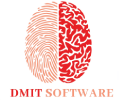How Schools and Colleges Can Use DMIT for Academic Success

Education is evolving rapidly, and institutions worldwide are constantly seeking innovative ways to enhance learning outcomes and prepare students for a competitive future. One such groundbreaking approach is DMIT (Dermatoglyphics Multiple Intelligence Test).
This method taps into the principles of neuroscience and genetic science, offering unique insights into students’ learning styles, strengths, and potential. But how can schools and colleges leverage DMIT to unlock academic success?
In this blog, we’ll explore what DMIT is, its potential benefits for students and educators, practical applications for curriculum design, and real-world success stories.
What Is DMIT and Why Is It Relevant in Education?
DMIT, or Dermatoglyphics Multiple Intelligence Test, is a scientific approach that analyzes fingerprints to understand an individual’s innate potential, learning preferences, and strengths. Based on the theory of multiple intelligences by Dr. Howard Gardner, DMIT bridges the gap between biology and education by interpreting how brain patterns influence learning abilities.
The relevance of DMIT in education lies in its ability to offer personalized learning strategies. It enables schools and colleges to recognize that there’s no one-size-fits-all approach to teaching. By identifying student learning styles and strengths, educators can create tailored programs that bring out the best in every learner.
Benefits of DMIT for Students, Teachers, and Institutions
For Students
- Personalized Learning Plans
DMIT reports help students and their families identify their natural talents and preferred ways of learning. With this insight, they can develop study routines that align with their strengths.
- Improved Confidence
When students understand their capabilities through DMIT, they gain the confidence to tackle their weaknesses and pursue their strengths.
- Early Career Guidance
DMIT provides insights into a student’s aptitude, helping educators recommend potential career paths that align with their abilities.
For Teachers
- Understanding Learning Styles
Teachers can adapt their teaching methods based on individual learning styles (e.g., visual, auditory, or kinesthetic), ensuring greater engagement and comprehension.
- Effective Student Interaction
DMIT helps educators identify why certain students struggle or excel in specific areas, enabling them to provide better guidance.
- Holistic Assessments
With DMIT, teachers can complement traditional exams with a deeper understanding of each student’s intellectual and behavioral traits.
For Educational Institutions
- Better Academic Performance
Personalizing learning experiences through DMIT enhances overall academic performance.
- Competitive Advantage
Schools and colleges that incorporate cutting-edge tools like DMIT can position themselves as forward-thinking and student-centered, attracting more enrollees.
- Focus on Holistic Development
Institutions can broaden their goals beyond grades, nurturing students’ diverse talents and preparing them for dynamic career landscapes.
Practical Applications of DMIT in Curriculum Design and Personalized Learning
Developing a Tailored Curriculum
By utilizing DMIT reports, schools and colleges can design curricula that cater to students’ natural inclinations. For example, students with strong visual intelligence can benefit from project work and presentations, while those with logical intelligence may prefer problem-solving exercises.
Individualized Career Counseling
DMIT is a game-changer for career counseling in education. By identifying students’ innate talents, schools can offer personalized career advice, reducing stress and confusion around future plans.
Enhancing Classroom Engagement
Teachers can use DMIT insights to structure lessons that resonate with different learning styles. This results in higher participation, reduced boredom, and improved classroom dynamics.
Strengthening Special Education
DMIT is especially useful in recognizing students with special educational needs. By understanding their unique brain patterns, institutions can develop supportive strategies that foster inclusion and success.
Case Studies and Success Stories
Case Study 1 School XYZ
School XYZ implemented DMIT for its middle schoolers. The results? Over 85% of students reported improved confidence in their abilities, and the school saw a 20% increase in academic scores overall. Parents appreciated the personalized touch, ensuring higher satisfaction with the school’s efforts.
Case Study 2 ABC College
A liberal arts college introduced DMIT during its orientation week. By integrating DMIT reports into their counseling process, the college helped more than 70% of students choose career paths that aligned with their strengths. Alumni later shared stories of career success, crediting the tailored guidance they received.
Addressing Common Misconceptions About DMIT
Despite its proven benefits, some misconceptions surround DMIT. Here’s the truth behind the most common myths:
| Myth | Fact |
|---|---|
| DMIT is not scientifically valid. | DMIT is rooted in neuroscience and dermatoglyphics, and has been validated through studies. |
| DMIT tests are one-size-fits-all. | DMIT is entirely personalized, based on an individual’s unique fingerprints and neural patterns. |
| DMIT replaces traditional education. | DMIT complements traditional education by offering tailored strategies, not replacing curricula. |
The Future of Education With DMIT
The demand for educational neuroscience will only grow in the coming years. By incorporating tools like DMIT, schools and colleges can stay ahead, ensuring that students receive not only high-quality instruction but also insights tailored to their unique potential.
Education in the 21st century is no longer about filling minds with facts but unlocking potential and guiding personal growth. DMIT offers a practical, science-backed solution to achieving this vision.
Want expert advice on implementing DMIT at your institution? Our specialist team is ready to help you get started.
FAQ
Q. What age group can benefit from DMIT?
DMIT is suitable for all ages, including young children, teens, and adults. While schools can use it for academic enhancement, colleges often leverage it for career counseling and personal development.
Q. How accurate is DMIT?
DMIT is highly accurate when conducted by certified professionals. The analysis is based on scientific studies correlating fingerprints with brain development.
Q. Do schools need specialized equipment to implement DMIT?
No, a simple scanner and access to a professional DMIT report service are all that’s required to get started.
